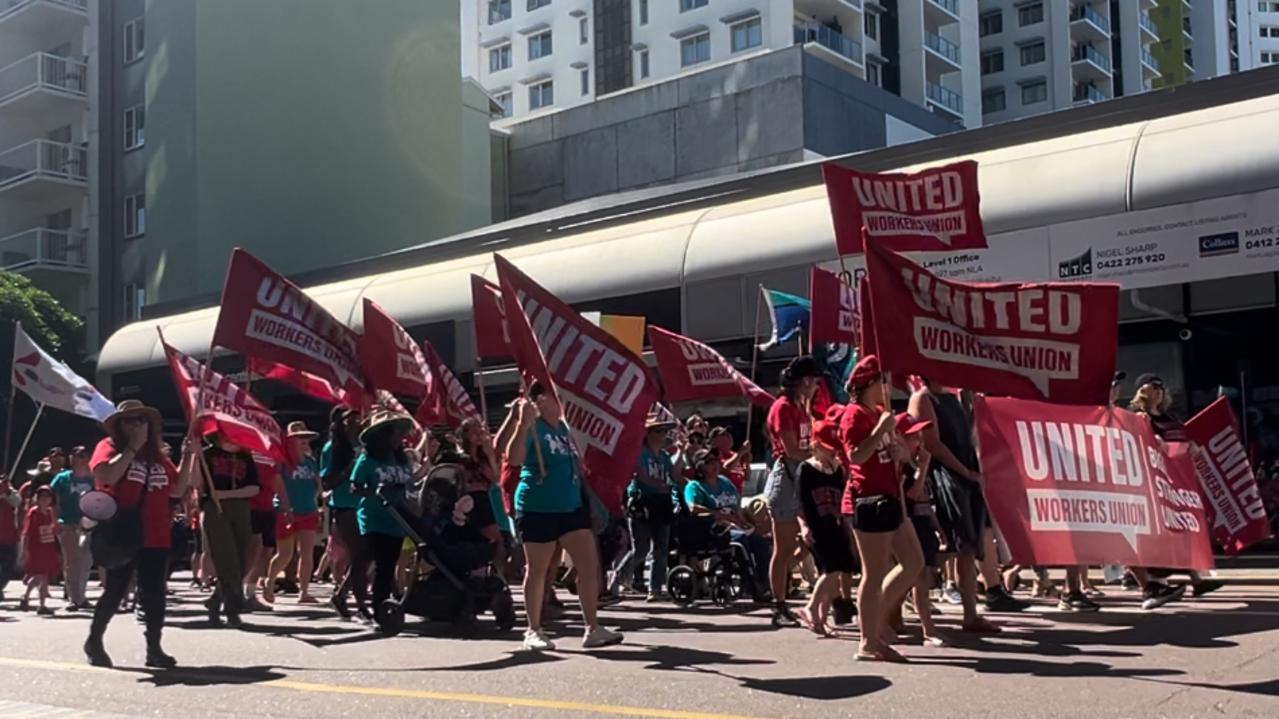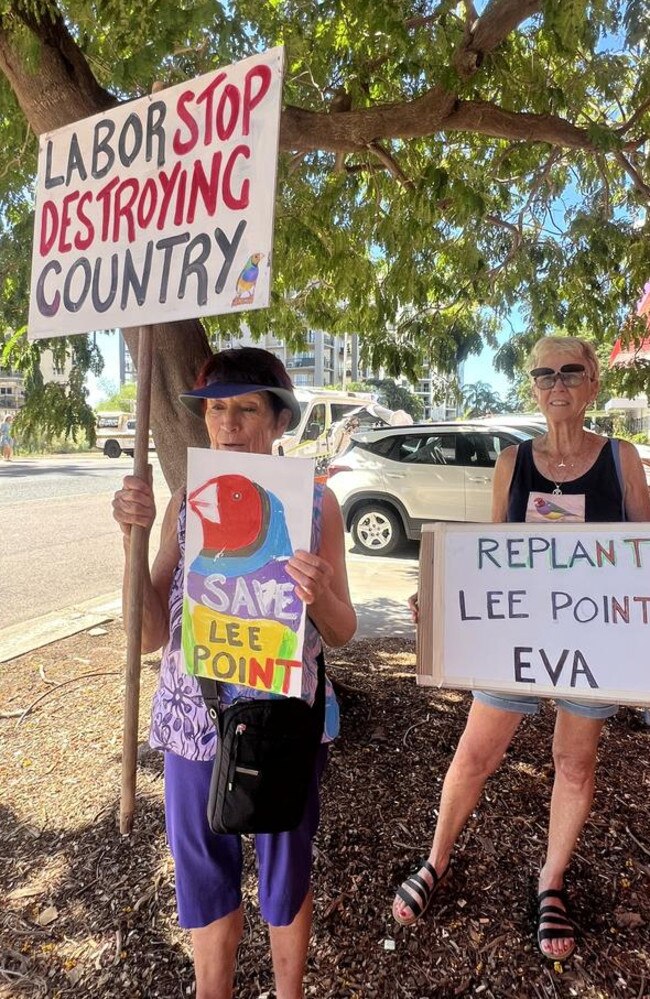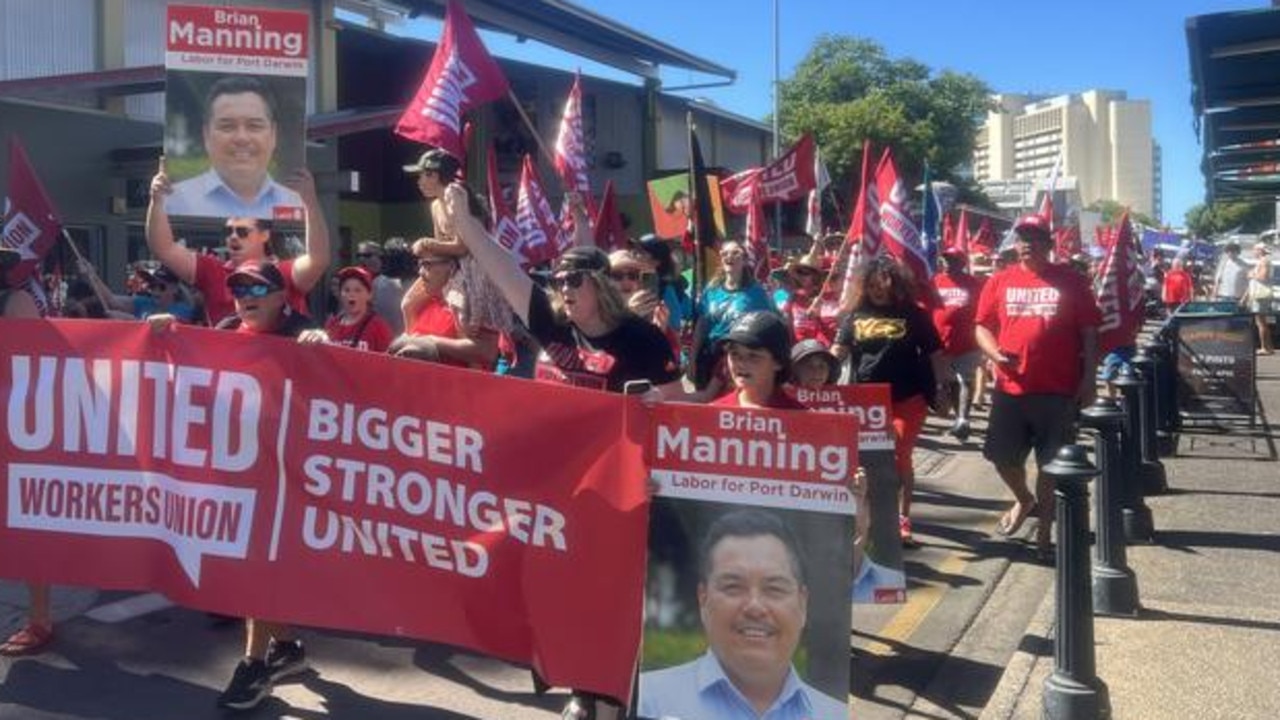Cunningham: Unionists, NT Labor members waving anti-gas placards should ask themselves ‘why’
The environmental health of the planet is in much better shape than the financial health of the Northern Territory – and something needs to give. writes Matt Cunningham.

There are some questions the unionists and Labor Party members waving anti-gas placards at last week’s May Day rally might like to consider.
Which school would they like to close, which hospital ward do they want shut down, and whose public service job do they wish to sacrifice in pursuit of their virtuous cause?
“No jobs on a dead planet,” said one of the signs being held up behind Chief Minister Eva Lawler as she marched through the CBD last Monday.
But the environmental health of the planet is in much better shape than the financial health of the Northern Territory.
This week’s budget lays bare the stark reality we face in the NT.
Net debt has hit $11bn and will balloon to more than $12.3 billion by 2027/28, by which time we will be paying more than $2 million in interest every day.
Our only way out of this diabolical situation is to drastically cut jobs and services, or to find more revenue.
Already, 72 per cent of that revenue is coming from the Commonwealth.
We are fortunate that there have been increases to a GST relativity, and, thanks to inflation, the amount of GST being raised nationwide.
But Treasury’s GST projections over the next four years seem optimistic, given rising interest rates are designed to reduce household spending and lower inflation.
This, however, is not the biggest fiscal problem awaiting in our not-too-distance future.
To find that, we have to fast forward a couple of years beyond the budget’s forward estimates, to 2030, when we expect the closure of Rio Tinto’s bauxite mine on the Gove Peninsula and GEMCO’s manganese mine on Groote Eylandt.

Commonwealth revenue aside, the next biggest contributors to our revenue stream are the taxes we pay, and the royalties we receive from the resources industry.
Next year’s budget has taken a significant hit because Cyclone Megan has caused the temporary shutdown of GEMCO’s mining operations, and the Core Lithium mine in the Top End has been mothballed.
When GEMCO and Rio Tinto shut down permanently our budget will have another massive black hole.
Amid all this doom and gloom, there is some cause for optimism.
The most positive thing about Tuesday’s budget was that it doesn’t include projects that are yet to reach final investment decision.
Most immediately, this includes onshore gas operations in the Beetaloo Basin, where Tamboran Resources expected to reach FID as early as the middle of this year.
Without the Beetaloo, the budget looks broken beyond repair.
Asked about our net debt-to-revenue ratio, which will hit 135 per cent in three years, Ms Lawler responded that this was not has bad as Victoria, where it is 170 per cent.
But on many other measures, our financial situation is far worse than Victoria, which is already widely recognised as a basket case.
For example, we are now carrying more than $42,000 in debt for every man, woman and child who lives here.
In Victoria, that number is closer to $30,000.
Victoria’s credit rating is Aa2, with a stable outlook.

Our credit rating has slipped to Aa3, meaning we will pay more interest on our record debt.
Where this all heads has already been spelled out in black and white.
It’s detailed in 174 pages of the Labor Government’s “plan for budget repair” from 2019.
The short summary is a disaster, with widespread cuts to government services and public sector jobs.
But that report also offers a way forward.
“The Territory urgently needs a concerted whole of Territory effort to attract private investment to expedite major projects and stimulate economic growth more broadly,” the report says.
“This will have the dual benefit of providing sustainable jobs for Territorians and supporting budget repair through increased own-source revenues and reduced pressure for economic stimulus expenditure.”
Unfortunately, there are some groups who are not on board for this “whole of Territory” effort. Which brings us back to the May Day marchers.
It’s easy to understand why the Greens oppose the gas industry.
It’s in their DNA.
And the Teals are drowning in so much wealth, the creation of lower-paid jobs can take a distant second place to environmental causes that will win friends at inner-city dinner parties. But for the unions and Labor Party members who argue against these projects, you have to wonder; what is the purpose of their cause?
Because the most likely outcome of success, is fewer jobs with worse conditions for the members they claim to represent.




